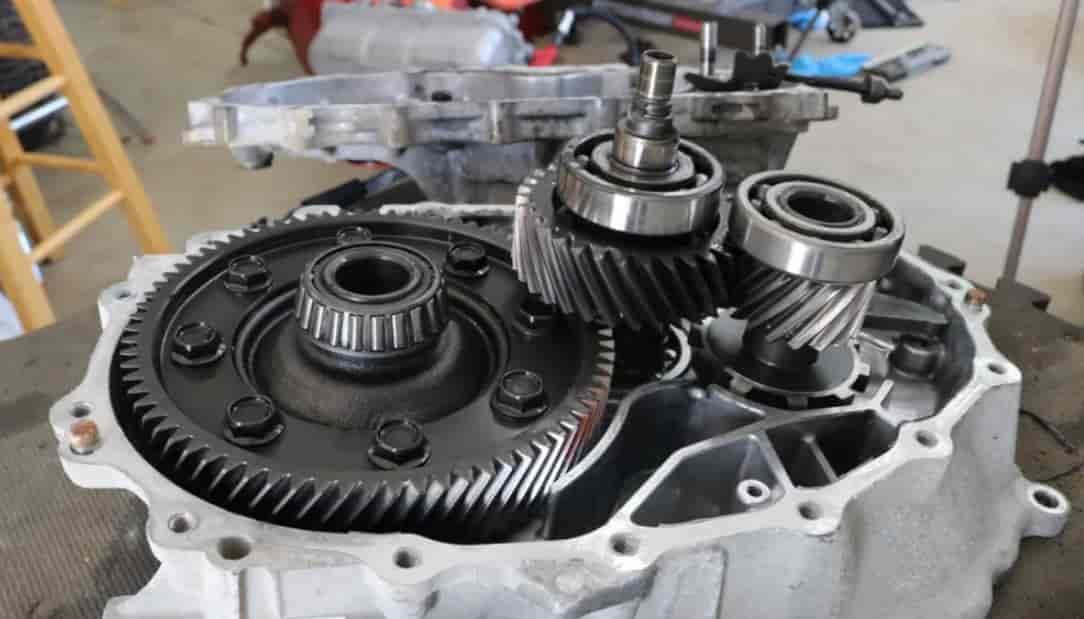Many drivers choose the Nissan Leaf because it promises smooth, quiet, and low-maintenance electric driving. Yet, as more Leafs age, some owners report strange noises, power loss, or jerking that feel suspiciously like transmission problems. The truth is both simpler and more complex than it seems.
Unlike gasoline cars, the Nissan Leaf does not have a traditional multi-gear transmission. Instead, it uses a single-speed reduction gear that transfers power from the electric motor to the wheels. When issues appear in this system, people often call them “transmission problems,” even though the cause may lie elsewhere in the drivetrain or motor controller.
This guide breaks down what Nissan Leaf transmission problems really mean, what causes them, how to fix them, and how to prevent long-term damage. Whether you drive a first-generation Leaf or the latest 2025 model, understanding these signs can save you thousands of dollars in repairs and keep your EV performing at its best.
Do Electric Cars Like the Nissan Leaf Really Have a Transmission?
Many new EV owners are surprised to learn that the Nissan Leaf does not have a traditional transmission. In a conventional car, a multi-gear transmission adjusts power from the engine to the wheels. Electric vehicles, however, deliver instant torque from the motor, so they do not need multiple gears to manage power delivery.
The Nissan Leaf uses what is called a single-speed reduction gear. Its job is to reduce the high rotational speed of the electric motor and convert it into efficient wheel movement. Because of this design, the Leaf’s “transmission” is far simpler and lighter than those found in gasoline cars.
Problems that feel like transmission issues are often related to other parts of the drivetrain. For example, worn reduction gear bearings can cause whining noises during acceleration. Faulty software or motor control units can lead to jerking or loss of power. In most cases, the “transmission” itself is not failing but rather being affected by other components in the system.
Understanding this difference helps drivers diagnose problems correctly and avoid unnecessary repairs. It also explains why EV maintenance is fundamentally different from traditional vehicles.
Common Nissan Leaf Transmission Problems
Although the Nissan Leaf does not have a complex gearbox, several drivetrain components can create symptoms that feel like transmission problems. Recognizing these early signs can prevent larger and more expensive failures.
Jerking or shuddering during acceleration
This is one of the most reported symptoms. It often occurs when the reduction gear bearing is worn or when the electric motor struggles to deliver consistent torque. In some cases, software calibration errors in the inverter system can also cause this sensation.
Whining or grinding noise at certain speeds
A high-pitched noise during acceleration or deceleration may indicate bearing wear or insufficient lubrication inside the reduction gear. If ignored, this can escalate into mechanical damage that affects the entire drivetrain.
Sudden loss of power or hesitation
When the Leaf hesitates or loses power temporarily, it is often due to communication issues between the inverter and motor control unit. Drivers sometimes mistake this for a slipping transmission, but it is actually an electrical synchronization problem.
Warning lights or error codes
Diagnostic codes such as P3102 or P0A90 can appear on the dashboard, signaling drivetrain malfunctions. These errors may involve the gearbox assembly, inverter cooling, or even voltage irregularities in the powertrain system.
Each of these symptoms connects to a different root cause, so accurate diagnosis is essential before attempting any repair.
How to Diagnose Nissan Leaf Transmission Problems
Proper diagnosis is the key to solving any Nissan Leaf transmission problem efficiently. Because electric drivetrains are simpler in design but rely heavily on software, even small irregularities can be misinterpreted. Identifying the true source of the problem helps prevent unnecessary repairs and saves both time and money.
Start by paying attention to unusual sounds. A healthy Nissan Leaf runs almost silently, so any whining, humming, or grinding noise that changes with vehicle speed can indicate bearing wear inside the reduction gear. If the sound becomes louder during acceleration, scheduling a professional inspection as soon as possible is recommended.
Next, observe how the car behaves on the road. If you feel a noticeable jerk when switching from regenerative braking to acceleration, there could be a synchronization issue between the inverter and the motor control unit. Smooth transitions are normal, but repeated jerks suggest a communication or calibration problem that requires attention.
It is also important to scan for diagnostic trouble codes using an OBD2 reader. Error codes such as P3102 or P0A90 often point to drivetrain communication faults or inverter temperature warnings. Always record these codes before clearing them, as they provide valuable information for technicians trying to locate the root cause of the issue.
Checking the cooling and lubrication systems is another critical step. Even though the Leaf’s drivetrain is mostly sealed, low or contaminated coolant and lubricant can affect performance. Insufficient cooling may cause overheating, which can damage bearings, gears, and electronic components over time.
Accurate diagnosis often involves combining these checks with professional testing equipment. When you are unsure, consulting a certified EV technician is the best approach. Specialized technicians can quickly pinpoint the problem, interpret diagnostic data correctly, and prevent costly or unnecessary part replacements.
Fixing Nissan Leaf Transmission Problems: Dealer vs Independent Mechanic
Once a Nissan Leaf transmission issue has been identified, the next step is deciding where to have it repaired. The choice between an official Nissan dealer and an independent mechanic can have a major impact on both the overall cost and the long-term reliability of the repair.
Authorized Nissan service centers provide several important advantages. They have access to the latest diagnostic software, technical bulletins, and genuine replacement parts. Trained technicians can quickly identify problems within the reduction gear, inverter, or control module with precision. The main disadvantage is the higher price. Repairs at official dealerships often range from eight hundred to more than two thousand five hundred dollars depending on the affected component. However, this option ensures that the repair meets factory standards and includes warranty protection, giving owners peace of mind.
Independent repair shops that specialize in electric vehicles are becoming more common and can be a cost-effective alternative. These workshops usually charge thirty to forty percent less than dealers and may offer creative solutions such as refurbishing the reduction gear instead of replacing it entirely. Before choosing an independent mechanic, it is important to confirm that the technician is certified to work on high-voltage EV systems. Proper training ensures safety, correct handling, and reliable repair results.
There are also a few ways to reduce costs further. Always check for active recalls or service campaigns from Nissan, as certain transmission-related problems have been covered under extended warranties. Keeping your vehicle software updated and scheduling regular inspections can help prevent small issues from turning into expensive repairs.
Ultimately, the right repair option depends on your budget, warranty coverage, and access to qualified EV technicians in your area. No matter which option you choose, preventive maintenance remains the best investment for keeping your Nissan Leaf’s transmission system in good health for years to come.
Long-Term Solutions and Prevention Tips
Preventing Nissan Leaf transmission problems is much easier and more affordable than repairing them after they occur. Although the Leaf’s electric drivetrain is engineered to last for many years, small habits and regular maintenance can make a big difference in long-term reliability and performance.
Keeping your vehicle software updated is one of the simplest and most effective ways to avoid transmission-like issues. Nissan frequently releases software updates that improve inverter efficiency, torque delivery, and temperature control. Installing these updates ensures that your Leaf operates under the latest system parameters, eliminating symptoms such as jerking, hesitation, or inconsistent power transfer that may resemble transmission faults.
Another important preventive measure is checking the cooling and lubrication systems. Even a small amount of contaminated coolant or degraded lubricant can shorten the lifespan of bearings inside the reduction gear. Ask your technician to inspect these systems during each scheduled service visit, especially once your Leaf exceeds sixty thousand miles. Maintaining proper fluid condition helps keep the drivetrain cool and reduces internal friction.
Driving style also plays a crucial role in transmission longevity. The Leaf’s instant torque makes it fun to drive, but frequent hard acceleration puts unnecessary stress on the reduction gear and bearings. Smooth, gradual acceleration and gentle regenerative braking minimize wear and help the drivetrain perform efficiently for years.
Finally, scheduling preventive maintenance on a consistent basis can catch potential problems before they escalate. Having the reduction gear inspected every two years allows technicians to identify early signs of wear. Some EV specialists also use vibration and noise analysis tools to detect minor imbalances or misalignments within the gear assembly before they lead to costly repairs.
By following these practical steps, Nissan Leaf owners can extend the life of their drivetrain, reduce repair expenses, and enjoy a smoother, quieter driving experience for many years. Proper care not only prevents major transmission problems but also helps the Leaf maintain its signature efficiency and reliability.
Conclusion
Nissan Leaf transmission problems can seem alarming at first, but understanding how the system truly works makes them easier to manage. Most of the issues that drivers call “transmission failures” are actually related to the reduction gear, inverter, or software communication within the drivetrain. With proper maintenance and early diagnosis, these problems rarely lead to complete mechanical breakdown.
The key to keeping your Leaf in top condition is a combination of awareness and prevention. Regular software updates, cooling checks, and gentle driving habits all contribute to a longer and more reliable lifespan for the drivetrain. Repairing problems early not only saves money but also ensures the electric motor continues to deliver the smooth and instant power that defines the Nissan Leaf experience.
If you are already facing strange noises or jerking sensations, consulting a certified EV technician should be your next step. A quick diagnostic can reveal whether it is truly a transmission problem or something far simpler. What symptoms has your Nissan Leaf shown so far? Share your experience below to help other EV owners stay informed and confident on the road.

